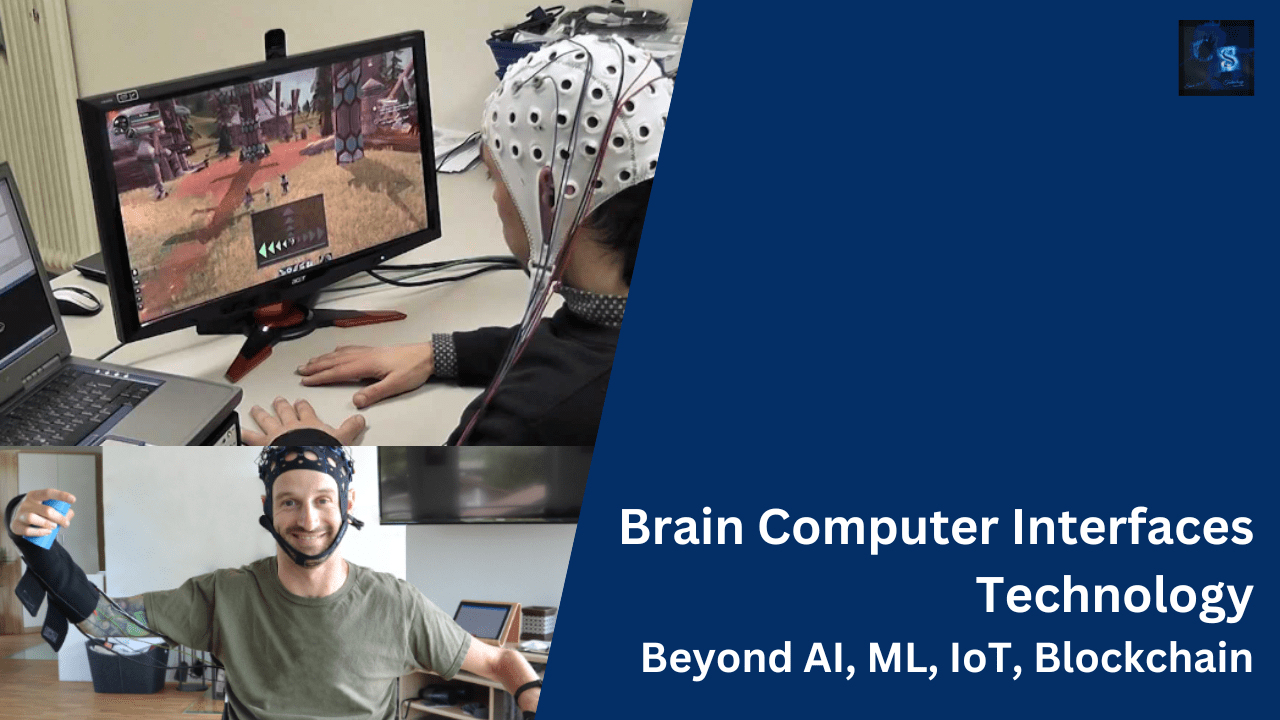Brain Computer Interfaces Technology, Beyond AI, ML, IoT, Blockchain
Hello guys, welcome back to our blog. Here in this article, we will discuss brain computer technology that is beyond AI, ML, IoT, and blockchain, and how this brain computer interface technology will benefit society.
If you have any electrical, electronics, and computer science doubts, then ask questions. You can also catch me on Instagram – CS Electrical & Electronics.
Also, read:
- Top Latest Electronic Sensors Only A Few Engineers Know
- Top Ways To Detect The Transmission Line Conductor Damage
- Top 06 Portable Battery Scooty, Removable Battery EV Scooty In India
Brain Computer Interfaces Technology
Brain-computer interfaces (BCIs) represent a swiftly advancing frontier of technological innovation that bears the potential to transform fundamentally the manner in which we engage with computers and our surrounding environment. BCIs, in essence, empower individuals to communicate and exercise control over devices utilizing the neural prowess of their brains, thereby circumventing the need for engagement of muscular or neural faculties.
The mechanism underpinning BCIs centers on the capture and interpretation of intricate brain signals, a process facilitated through a diverse array of methodologies encompassing electroencephalography (EEG), magnetoencephalography (MEG), and intracortical recordings. Among these, EEG stands as the most prevalent form of BCI technology, distinguished by its non-invasiveness and the use of electrodes affixed to the scalp. Conversely, MEG offers a non-invasive alternative but necessitates the use of specialized, cost-intensive equipment. Intracortical recordings, although the most invasive approach, yield unparalleled fidelity in capturing brain signals.
Following the acquisition of brain signals, sophisticated machine learning algorithms come into play, tasked with deciphering these neural enunciations. These algorithms undergo training to establish correlations between distinct brain patterns and specific actionable commands. For instance, a BCI can be trained to discern the neural patterns associated with the cognitive act of moving a cursor to the left or right. Once trained, the BCI empowers users to manipulate the cursor simply by entertaining the corresponding thought.
The applications of BCIs span a vast and multifaceted spectrum. A particularly promising avenue lies in their capacity to ameliorate the lives of individuals grappling with disabilities. BCIs harbor the potential to facilitate communication, computer interfacing, and even prosthetic limb control for those dealing with conditions like paralysis. Furthermore, BCIs hold the promise of offering substantial assistance to individuals affected by other impairments such as stroke, cerebral palsy, and amyotrophic lateral sclerosis (ALS).
Beyond their indispensable role in the domain of healthcare, BCIs also cast their influence upon realms of entertainment and gaming. They can be pivotal in the conception of innovative video games wherein gameplay is dictated by the user’s cognitive musings. Similarly, BCIs hold sway in the realm of immersive virtual reality, where experiences respond to the wearer’s mental directives.
While the development of BCI technology remains in its fledgling stages, it marches forward with steadfast momentum. The trajectory ahead foresees BCIs becoming increasingly accessible, cost-effective, and potent. With this evolution, BCIs are poised to revolutionize our interactive interfaces with computers and the surrounding world.
In the contemporary landscape, BCIs have already found application in various domains:
01. Communication: BCIs are instrumental in aiding individuals with paralysis in communication. Noteworthy is the BCI system known as P300, which enables users to spell out words by concentrating on specific letters.
02. Prosthetic Limb Control: BCIs serve as an interface for controlling prosthetic limbs. BrainGate, for instance, allows users to manipulate a prosthetic arm through their cognitive intent.
03. Gaming: BCIs are instrumental in the development of pioneering video games, where gameplay is dictated by the player’s cognitive processes. Games like Mindball allow users to guide a spaceship by focusing on head movement.
04. Virtual Reality: BCIs are pivotal in crafting immersive virtual reality experiences that react to the user’s mental commands. Companies like NeuroSky have devised BCI headsets for controlling VR applications and games.
BCI technology, while nascent, is rapidly advancing. In the forthcoming years, we can anticipate greater affordability, accessibility, and potency in BCIs. These transformative interfaces hold the potential to reshape our interactions with computers and the world at large, promising enhanced independence, enriched experiences, and novel frontiers in human-computer interaction.
This was about “Brain Computer Interfaces Technology“. I hope this article may help you all a lot. Thank you for reading.
Also, read:
- 100+ C Programming Projects With Source Code, Coding Projects Ideas
- 1000+ Automotive Interview Questions With Answers
- 1000+ Interview Questions On Java, Java Interview Questions, Freshers
- App Developers, Skills, Job Profiles, Scope, Companies, Salary
- Applications Of Artificial Intelligence (AI) In Renewable Energy
- Applications Of Artificial Intelligence, AI Applications, What Is AI
- Applications Of Data Structures And Algorithms In The Real World
- Array Operations In Data Structure And Algorithms Using C Programming
